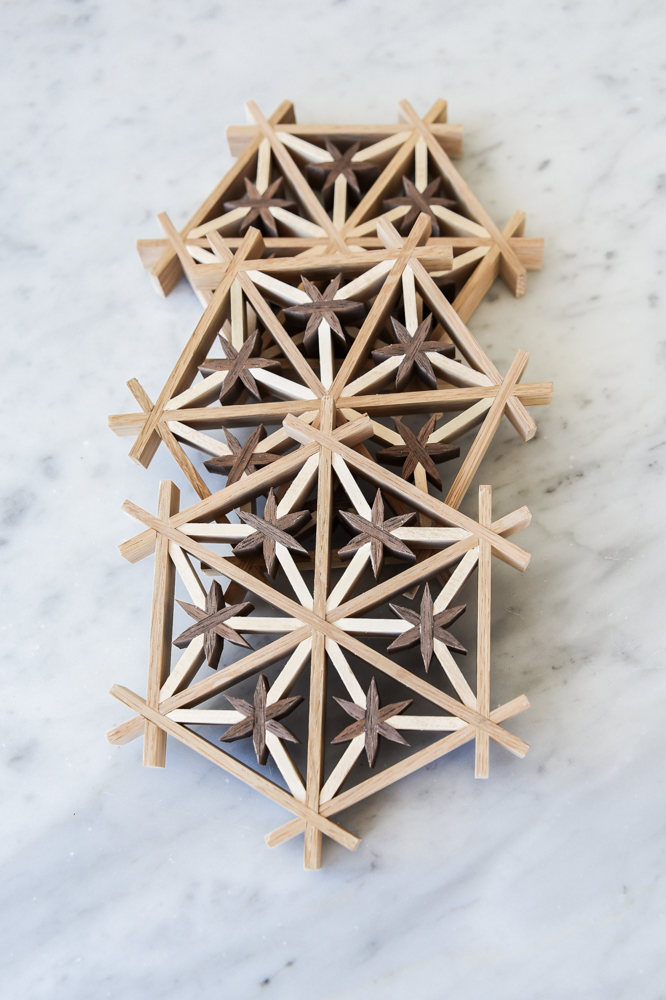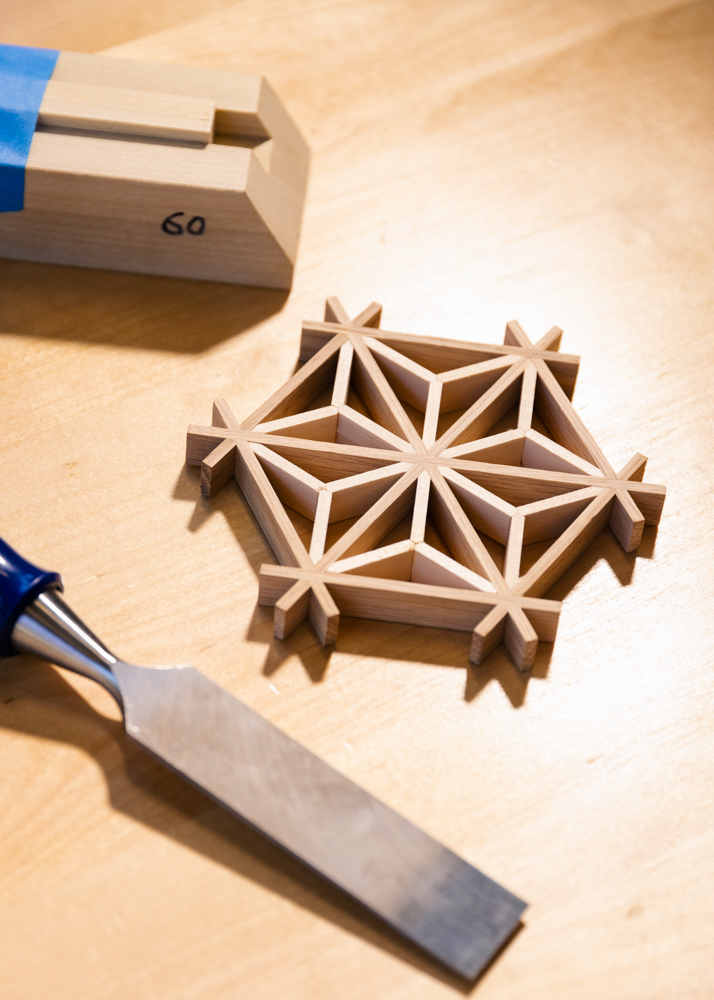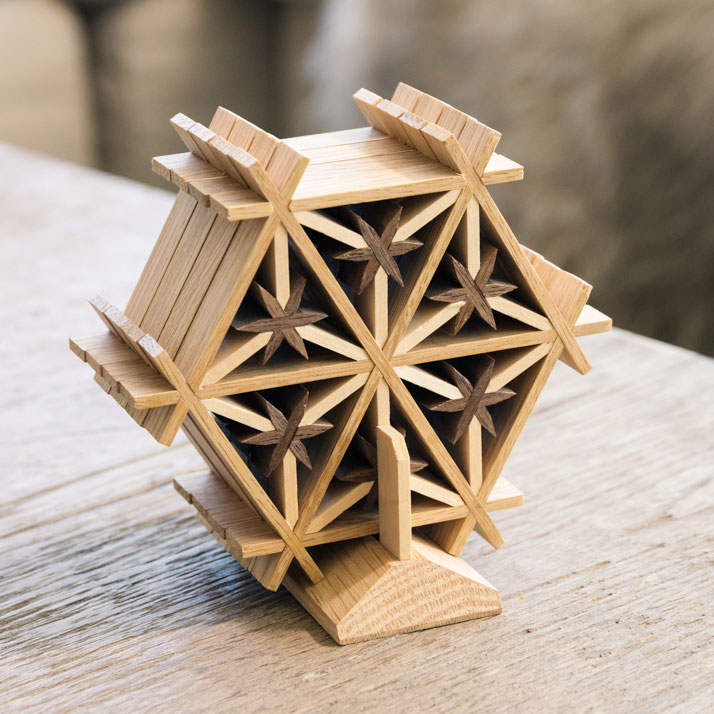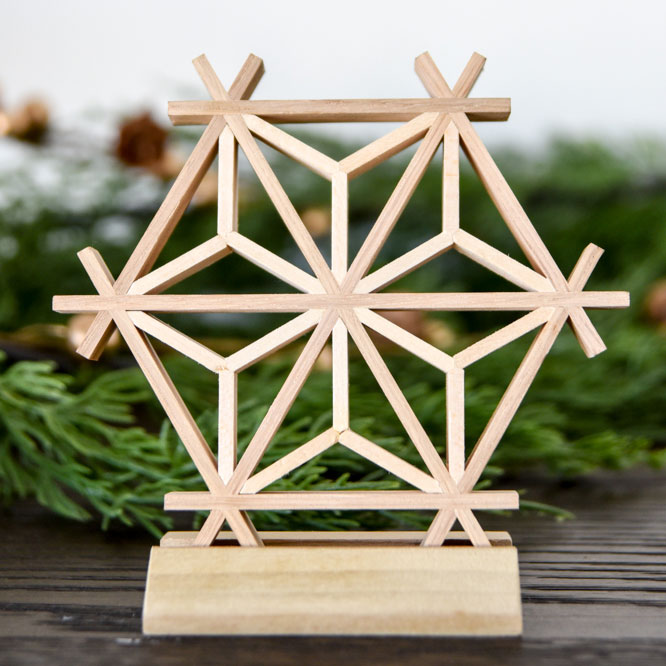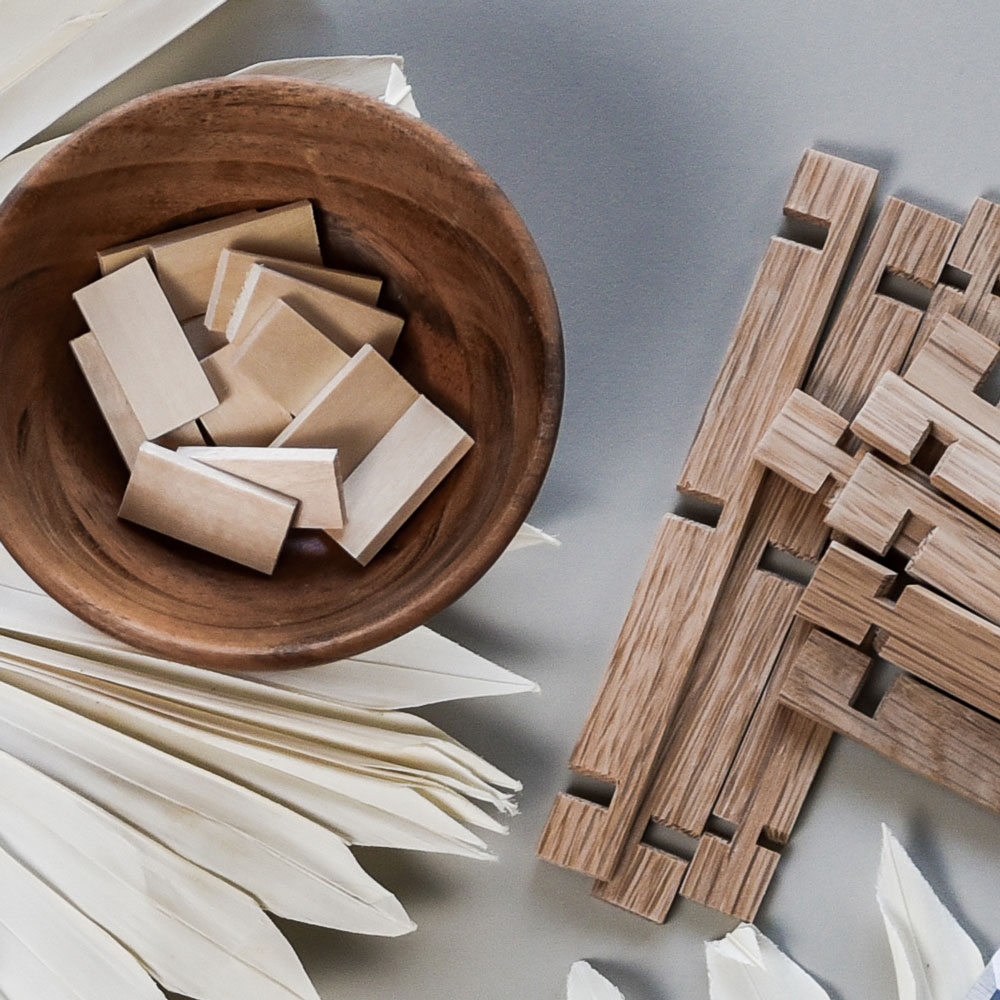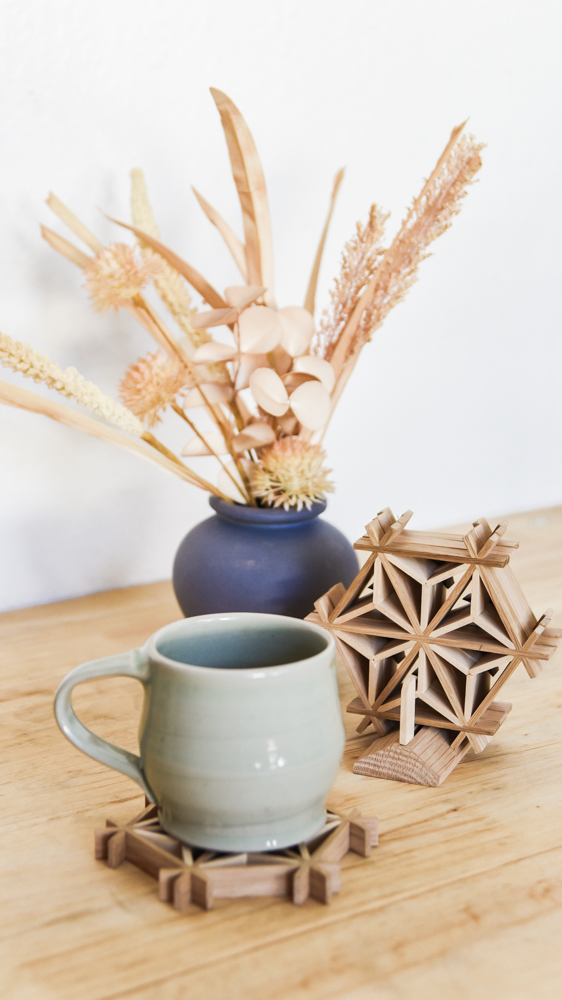More Details
MICHAEL OLIN
KUMIKO WOODWORKING
Woodworking expert Michael Olin walks crafters through the highly detailed art of kumiko. With precision, home artists will learn how to make the Asanoha kumiko geometric pattern representing a hemp leaf. In this workshop, you'll learn to use a kumiko jig to create precise 30 and 60 degree angles and then carefully assemble your prepped golden oak and basswood strips to snugly secure them into their designated slots. Once finished, the kumiko piece can serve as a unique coaster, decor, or holiday ornament. Our custom kit provides a unique stand to show of your finished work in your home.

WHAT IS KUMIKO?
Kumiko is a traditional Japanese woodworking technique and art form used to create intricate patterns and designs by assembling small wooden pieces without using nails or glue. These wooden pieces are often carefully cut and shaped to fit together in precise geometric patterns, creating stunning latticework and decorative screens. In traditional Japanese architecture, Kumiko is commonly used in the construction of shoji screens (sliding paper screens) and fusuma (sliding papered doors).
THE ASANOHA PATTERN
One of the most renowned wagara designs, the Asanoha pattern, is a simple yet striking representation that embodies the resilience and rapid growth of the hemp plant. Its name, derived from 'asa' (hemp) and 'ha' (leaf) in Japanese, draws its inspiration from the intricate structure of hemp leaves, resembling six-pointed stars. This intricate design is laden with connotations of growth, strength, and endurance, mirroring the hemp plant's ability to thrive in challenging conditions.
WOODWORKING KIT PREP
To bring kumiko woodworking to our community, we've worked closely with a range of woodworkers who have helped us prep golden oak, basswood and even walnut strips with exact precision. These hardwoods start as rough cuts and when our team is finished, the grain is revealed and the strips are smooth and ready to work with. Because kumiko requires tension to keep the angled strips together, perfect angles and widths are an absolute must.
The jigs in our kits are also custom to this workshop so that makers can practice creating exact angles with a sharp chisel at home. A traditional Asanoha pattern requires four unique angles - we've prepped two angles for you so that your finishing project requires a single two sided jig featuring a 30 and 60 degree angle. Now that's geometric perfection!



About the Artist: Michael Olin
Michael Olin is a highly skilled woodworker and the founder of Olin Woodworks. With a passion for precision and a deep understanding of traditional Japanese woodworking techniques, Michael has become an expert in the art of kumiko.
He is known for his meticulous craftsmanship and teaching others the delicate craft of creating intricate wooden patterns without nails or glue. Michael's workshops and guidance have empowered home artists to master the art of kumiko and create stunning pieces of wooden art. His dedication to this traditional craft has made him a respected figure in the woodworking community.
Michael's journey in woodworking commenced when his parents had hardwood floors installed in their old farmhouse. "That small job made a big difference in how I felt about woodworking," Michael shares. He pursued a degree in agriculture and later secured a job in insurance after college, but soon realized he wasn't suited for that line of work.
In search of a new path, Michael recollected the impact of that small dining room job. He spent approximately a year working in carpentry before finding his way to a fine cabinet shop, specializing in traditional Japanese furniture. There, he learned how to build Shoji Screens and began teaching himself the art of Kumiko.
We can’t wait to see how your kumiko woodworking project turns out. Share your creative journey and finished creation with us by tagging @thecraftersbox + @olin_woodworks in your social posts. Don’t forget to use #thecraftersbox so our community can also see your workshop come to life. Happy making!




